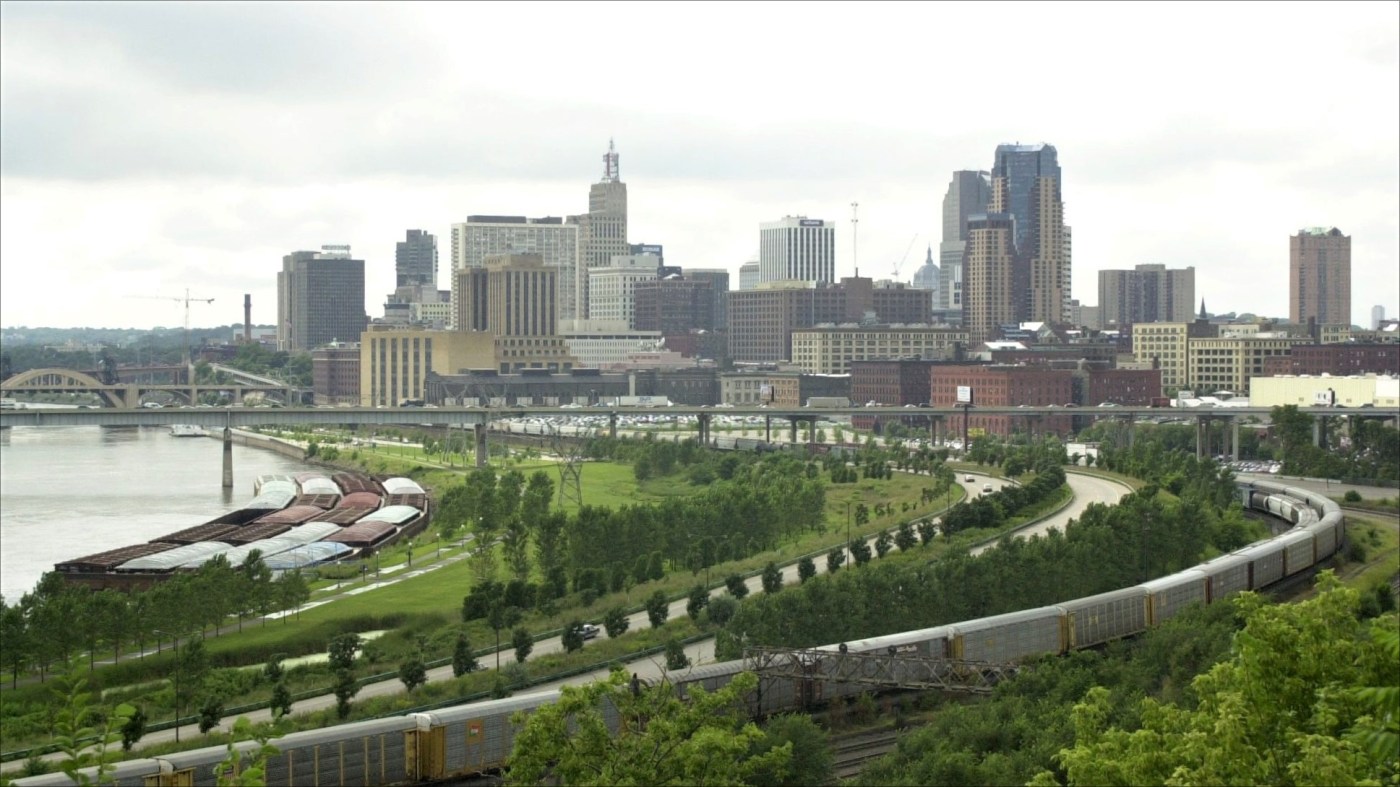
In final budget debate, St. Paul council to scrutinize mayor’s plan to erase $100 million medical debt
The St. Paul City Council is poised this week to approve the mayor’s recommended city budget and tax levy, adding more hires in several departments amid a debate over whether to use $1 million in federal relief dollars to buy out medical debt for everyday residents, as requested by the mayor’s office.
If approved by the council on Wednesday afternoon, the overall property tax levy will go up 3.7% next year, totaling $208.5 million.
As for the city budget, “there’s some changes,” said City Council President Amy Brendmoen on Monday. “We’re increasing the fire department budget by $550,000. It’s enough to cover four firefighters beyond what was requested (by the mayor’s office). … I trust that the mayor and fire chief will determine the best way to deploy that.”
Truth in taxation hearings
A final truth in taxation hearing on the city’s 2024 budget and tax levy was scheduled to take place at 6 p.m. Tuesday in the council’s City Hall chambers on the third floor or 15 W. Kellogg Boulevard.
The timing irked some taxpayers, who noted that the St. Paul School District was scheduled to hold its own truth in taxation hearing at the same time in the administration building at 360 Colborne St.
Just an hour or two after the council puts its budget to bed, Ramsey County will host its truth in taxation hearing at 6 p.m. Wednesday at the Maplewood YMCA Community Center. The Metropolitan Council will host its hearing at 6 p.m. on Dec. 13 at 390 Robert St. N.
Budget proposal
Under St. Paul Mayor Melvin Carter’s budget proposal, which was released in August, the city budget levy for general operations in 2024 is $160 million.
An additional $23 million covers the city’s debt service, and $22.5 million funds the library agency. The St. Paul Port Authority levies $2.6 million.
The tax levy for the St. Paul Housing and Redevelopment Authority is an additional $6.3 million.
More hiring for police, fire, public works, human resources
The mayor’s budget adds positions in several departments, notably Human Resources, Parks and Public Works — including five more employees for snow plowing and summer street maintenance — while staying flat in the mayor’s office, the libraries, the city council and the Office of Emergency Management.
The St. Paul Police Department, budgeted for 763 employees last year and 782 this year, will grow to 798 employees, including civilians. The St. Paul Fire Department, budgeted for the equivalent of 504 employees this year, will grow to 515 employees after the council found funding for four more hires than recommended by the mayor.
While the mayor’s office has yet to indicate how the money will be spent, “we’re hoping that it will be used to add sworn firefighters to staff the new Engine 7 at Ross and Earl,” said Mike Smith, president of the International Association of Fire Fighters Local 21.
The St. Paul Firefighters represented by Local 21 will receive 11% raises over three years, as recently determined by an arbitrator following a protracted contract dispute with the mayor’s office.
Revenue
Brendmoen said sales tax revenue came in above projections, allowing for an ample number of STAR grants to back neighborhood-based nonprofit programs and construction.
The council dug through budget coffers to find money for an additional development associate or project manager at the St. Paul Port Authority, as well as $150,000 in STAR funds for library materials, $200,000 in planning for the remodel of the Como Lakeside Pavilion and one-time spending of $347,000 on new parks equipment.
“The council’s recommended priorities were largely funded,” Brendmoen said. “Council members should be pretty happy with where we landed.”
Questions on medical debt proposal
That said, more than one council member has raised questions about the mayor’s proposal to buy out $100 million of individual medical debt citywide. The mayor had proposed using $1 million in federal emergency relief funding left over from the American Rescue Plan to partner with RIP Medical Debt, a New York-based nonprofit that buys hard-to-collect medical debt and negotiates pay-offs at rates approaching $1 for every $100 in uncollected debt.
Some council members have said the funds would be better used to support Catholic Charities and homeless initiatives. In a letter to the council and mayor’s office this month, the St. Paul Area Chamber of Commerce noted medical debt relief was “not a fundamental responsibility of municipal government” and recommended using the $1 million toward street repair.
Chamber officials praised the mayor’s proposed use of $13.6 million in public safety aid from the state legislature for a wide range of public safety strategies, including a second police academy and an initiative with Ramsey County around non-fatal gun violence.
They also noted that additional summer street maintenance and snowplowing staff will be “a welcome response to the challenges facing the city’s street infrastructure,” which they said could use even more help.
Tax levy changes through the years
With hiring slowed by a tight labor market, some of the council discussion in the final weeks of the budget season has centered around how to adjust the budget for staff departures that may not be filled for months. “We’re talking this time around about attrition savings,” Brendmoen said. For instance, “we know the market for city attorneys is challenging at this juncture. Can we budget for (fewer) because we know we won’t see them until July, at the earliest?”
In August, Carter unveiled an $820.5 million budget proposal for 2024 that would increase the city’s property tax levy — the sum total of all taxes collected from property owners — by 3.7 percent. Owners of median-value houses ($267,400 for 2024, up from $266,300 this year) would likely see at least a slight property tax decrease next year, due in part to large commercial and industrial properties gaining value at a faster clip and absorbing more tax burden.
The 2023 budget is $801 million. The total property tax levy would be $208.5 million, or $7.4 million more than this year’s levy, which is $201.1 million.
Past tax levies
In recent years, proposed tax levy changes in St. Paul have ranged from double-digit hikes to nothing at all, with the council generally trimming the mayor’s proposed tax levy increase by up to a percentage point when it comes before them each December for final adoption.
Compared to last year, the “modest” 3.7% increase on deck for 2024 is “a welcome reprieve for businesses and residents alike,” said B. Kyle, president and chief executive officer of the St. Paul Area Chamber of Commerce, in a Dec. 1 letter to the city council.
In 2022, the council approved a hefty 14.65% tax levy increase, which was heavily impacted by a court-ordered decision to stop issuing fees for certain types of routine street maintenance and instead fold more than $13 million in street spending into the property tax-supported general fund. The mayor that year had sought a 15.3% increase.
In 2021, the council approved a 6.17% tax levy increase, which the council had pared down from the 6.92% increase proposed by Carter. In 2020, toward the height of the pandemic, the mayor’s budget plan called for no levy increase. In 2019, a divided city council narrowly approved the mayor’s 5.85% increase, which had grown over the course of the budget season.
Toward the end of the mayor’s first year in office in 2018, the city council reduced his proposed 11.5% tax levy increase to 10.5%.
Related Articles
St. Paul firefighter raises coming after arbitrator called in to settle contract
For 30 years, she built a garden of stone. St. Paul wants the boulevard cleared.
Obituary: Former St. Paul City Council Member Roberta ‘Bobbi’ Megard remembered for ‘tireless’ community work
From Bach to Qeej: St. Paul awards $1.3 million in Cultural STAR grants to 66 nonprofits
St. Paul house, an early work of famed architect Cass Gilbert, is named a city historic site

